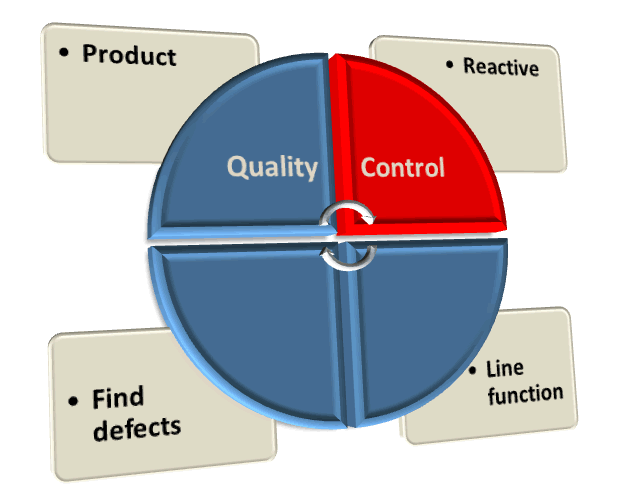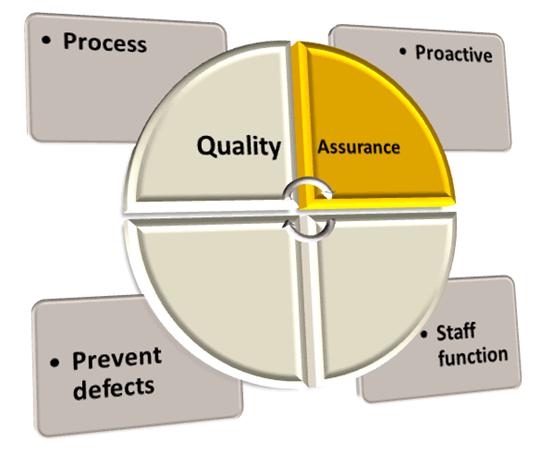Quality control and quality assurance
Quality Assurance is process oriented and focuses on defect prevention; while quality control is product oriented and focuses on defect identification

Quality Control (QC)
Quality Control (QC) refers to quality related activities associated with the process of creating products and services. Quality control is used to verify that pre-determined quality standards are being met through quality inspections and reviews which detect poor quality, and identify, non-conformance with those standards.

Quality Assurance (QA)
Quality Assurance is the process used to assure the consumer that a firm's products or services will be fit for purpose, by preventing quality issues rather than detecting them. The objective is to meet quality standards at each stage of production to ensure customer satisfaction with the final product or service. Examples of quality assurance include process checklists, project audits and methodology and standards development. Quality assurance is recognised by the international standard ISO 9000.
What are the key differences between Quality Control and Quality Assurance?
- Quality control is about adherence to requirements for a particular product. Quality assurance is generic and does not concern the specific requirements of the product being developed.
- Quality assurance activities are determined before production work begins and these activities are performed while the product is being developed. In contrast, quality control activities are performed after various stages of the production process, to detect substandard quality from the delivery of raw materials to the output of finished goods.

Quality control is the traditional approach to quality management:
- It is reactive because it may involve inspection and sampling after a good is manufactured or semi-manufactured.
- The process is normally 'controlled' by a single department (quality control department), which is part of the manufacturing process and therefore a line function.
- The controller is tasked to find defects or poor quality before the good is delivered to the customer.

What must be remembered is that QC is unlikely to TEST every product or process. It works by selecting samples, which are subjected to a set of predetermined tolerances and quality standards. It is possible that the sample is not representative of the whole batch and substandard products are still sold as a result.
Examples of quality control on finished products may include the testing of a sample of finished cars on 'test beds' where functions of the car, such as the efficiency and longevity of the braking system, can be assessed over a period of time. This process can be expensive as it may involve qualified professionals, such as engineers or chemists carrying out the checks.
A product that has been through a QC process may have a label attached indicating it has been tested, such as the Bureau Veritas c-mark. Displaying such a label can lead to increased consumer confidence and demonstrate a firm's commitment to providing high quality and health and safety protection. In the competitive marketplace, a commitment to standards beyond legislation through a certification program can help brands, retailers, and manufacturers to differentiate themselves form their competition.

Quality standards
Quality standards are part of a framework for achieving a recognised level of quality within an organisation. Achievement of a pre-determined quality standard demonstrates that the organisation has met the requirements laid out by the certifying body, such as ISO.

Quality assurance is the process of the firm guaranteeing to its customer, the quality of the good or service to the consumer. To achieve this:
- Firms are proactive in setting up processes and developing standards before product is made or service provided.
- All employees in the firm are responsible for quality, not just those involved directly in production, so it is a staff function, rather than a line function.
- The purpose of quality assurance is to prevent defects by setting up the controls and mechanisms to check the quality at every stage of the process. Targets for quality are set, such as 'zero defects'.
